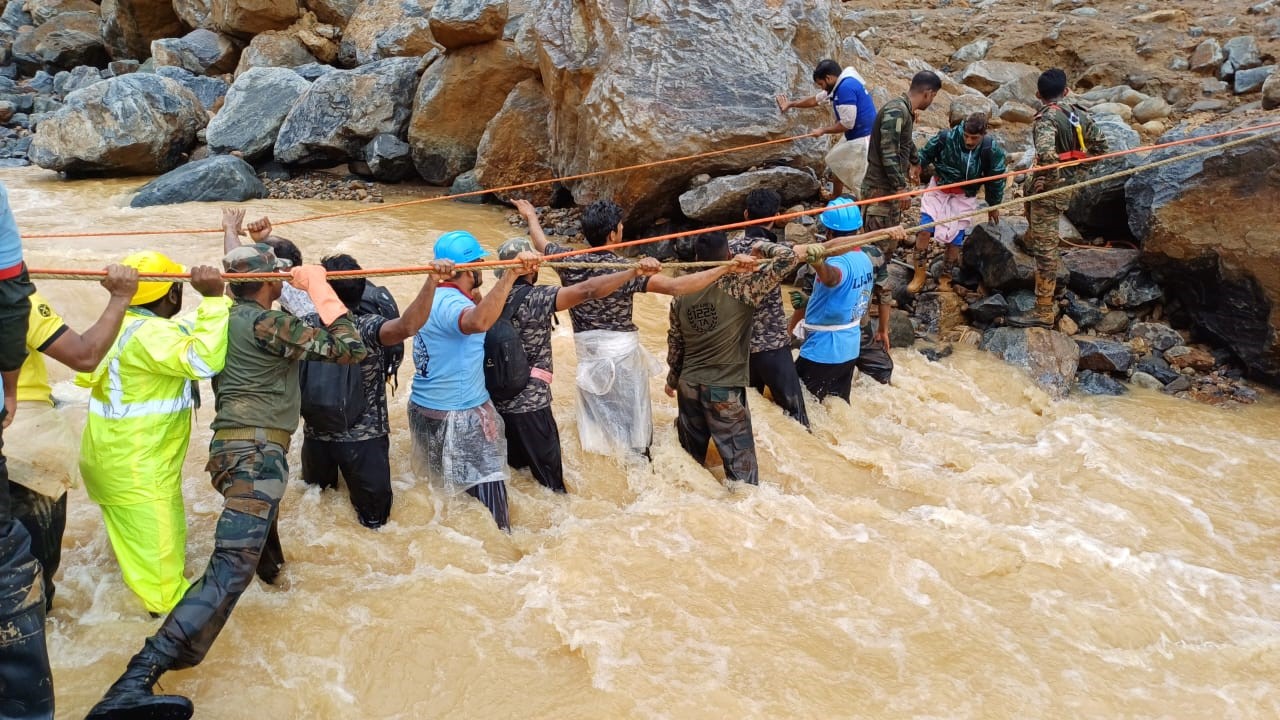
Wayanad/New Delhi: The blame game begins after the tragedy in Wayanad. Amidst all the boulders and rubble in Chooralmala and Mundakkai in Wayanad which bore the brunt of the monster landslides Tuesday morning, a controversy rolled down from New Delhi to Kerala with Union Home Minister Amit Shah claiming in the Lok Sabha Wednesday, July 31, 2024, that the state had ignored the repeated warnings issued by the Centre of possible landslides in the region following heavy rainfall.
The Union Minister said that the Centre had issued warnings on July 24, 25 and 26th to the Kerala Government which chose to ignore it and take precautionary measures. He said the Kerala Government should have taken prompt action following these warnings and should have relocated people living in vulnerable areas.
Kerala Chief Minister Pinarayi Vijayan admitted that red alerts were issued by the Centre but the India Meteorological Department (IMD) had not predicted such a large amount of rainfall. What hit Wayanad was more than double the amount of what was predicted by Central agencies, he told the media in Thiruvananthapuram.
Meanwhile, the Hume Centre for Ecology and Wildlife Biology in Kalpetta in Wayanad said that the agency had issued warnings of possible landslides in Mundakai to the district administration of Wayanad at least 16 hours before the first spell of landslide Tuesday.
“We have a comprehensive rainfall monitoring system in Wayanad with over 200 weather stations that record data on a daily basis. Our data indicated that Puthumala, the nearest weather station to Mundakkai, had received over 200 mm of rainfall on Sunday alone. This was followed by another spell of 130 mm overnight. It is important to note that a landslide can be triggered when a hilly region receives approximately 600 mm of rainfall in a day or two. The region had received an unprecedented rainfall of 330 mm of rainfall in just one day. Any further heavy spell could trigger a landslide,” CK Vishnudas, director of Hume Centre was quoted in the media.
“We passed on this information to the district administration immediately, but we are not sure why the authorities failed to act,” he added.
Since June 1, 2024, several locations in Wayanad and other regions have experienced over 3000 mm rainfall. “In a span of 50 days, these areas became highly rainfall saturated. To make things worse, these regions are extremely vulnerable to landslides when exposed to sudden spells of further rainfall and trigger landslides. This is what happened in Wayanad,” Vishnudas said.
The changing rainfall pattern in Kerala is mainly due to climate change, he added.
For the past four years, the Hum Centre has been sharing data with the district administration on rainfall and landslides.
*Shankar Raj is a former editor of The New Indian Express, Karnataka and Kerala, and writes regularly on current affairs.






